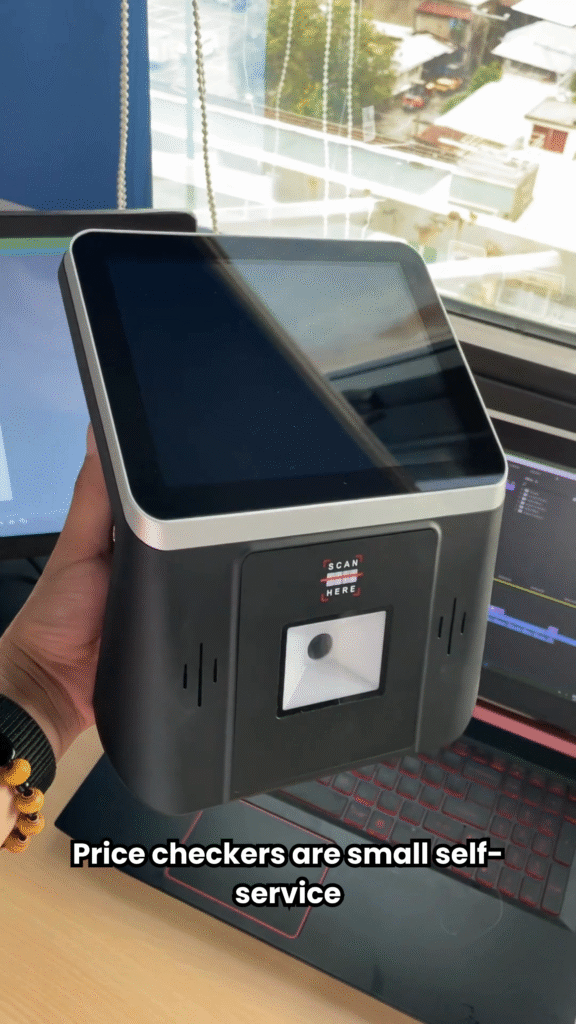Celebrating a Year of Growth and Success at InstallersPH IT Solutions. Introduction. As the year comes to a close, InstallersPH IT Solutions takes a moment to reflect on a journey defined by …
What are Price Checker Systems?

Introduction
In our latest informational video, we took a closer look at a vital yet often overlooked component of modern retail operations—Price Checker Devices. These devices serve a simple but essential purpose: empowering customers to independently verify product prices while shopping. As we showcased in the video, they not only enhance in-store efficiency but also improve customer satisfaction by reducing reliance on staff for basic inquiries.
This article aims to further unpack what these devices are, how they work, and why they’ve become a standard feature in supermarkets, convenience stores, and retail outlets.
Video Overview.
From Manual Price Checks to Smart Devices.
Before price checker devices became mainstream, customers had to approach store personnel for price confirmation—especially during sales events or when price tags were unclear or missing. This system was inefficient for both customers and staff. With the introduction of self-service price checker units, this minor pain point has been transformed into a smooth, tech-driven solution.
In the video, we demonstrated how a typical price checker device works: customers simply scan the barcode of a product, and within seconds, the screen displays the corresponding price, any discounts, or promotional offers. Most devices are mounted on accessible walls or shelves throughout the store for convenience.
Features and Functionality.
Price checker devices come with a variety of features, depending on the store’s setup and budget. Here are the key elements highlighted in the video:
Barcode Scanner: The heart of the system. It quickly reads standard UPC or QR barcodes.
Display Screen: A bright and easy-to-read screen that provides instant price details and sometimes promotional messages.
Network Connectivity: Typically connected via LAN or Wi-Fi to a central inventory or POS system to ensure real-time price accuracy.
User-Friendly Interface: Most systems require no instructions—just scan and see the price.
Optional Voice Prompts or Multilingual Support: For accessibility and wider audience reach.
In our demo, we explored both basic standalone units and more advanced models that integrate with digital signage or can display real-time stock levels and product descriptions.
Why Price Checker Devices Matter?
At a glance, these devices might seem minor in the grand operation of retail technology. But their impact on customer experience and operational efficiency is notable:
Reduces Staff Workload: Employees can focus on more critical tasks instead of constantly answering price queries.
Boosts Customer Confidence: Shoppers can verify prices independently, leading to fewer misunderstandings or surprise charges at checkout.
Enhances Sales: By clearly displaying discounts and promotions, these devices can help drive impulse purchases.
Supports Accuracy: Prices are pulled directly from the store’s POS or inventory system, ensuring consistency.
Practical Integration in Retail Environments.
For store owners, integrating price checker devices isn’t just about customer service—it’s also about future-proofing operations. In the video, we walked through common installation scenarios and explained how these devices can be wall-mounted, shelf-mounted, or even embedded in self-service kiosks.
Modern units are compact, durable, and relatively easy to install with a direct connection to the POS system. They also support software updates to accommodate changes in pricing logic, tax rules, or promotional strategies.
Whether you run a small retail outlet or a large supermarket, price checkers add an affordable layer of convenience to the customer journey.
Conclusion
As retail continues to embrace automation and self-service technologies, price checker devices remain a key part of that evolution. Their simplicity, reliability, and customer-friendly approach make them indispensable tools in today’s fast-paced retail environment. From increasing staff productivity to creating a more seamless shopping experience, their value goes far beyond just checking prices.
Articles
Notice to the Public: Holiday Vacation Advisory of InstallersPH IT Solutions. Introduction. InstallersPH IT Solutions is committed to providing reliable and professional IT services to all our valued clients and partners. As …
The On-the-Job Training Experience of Sherlyn Linao. Introduction On-the-Job Training (OJT) is an essential part of a student’s academic development, providing practical exposure to real workplace environments. It allows interns to apply …



